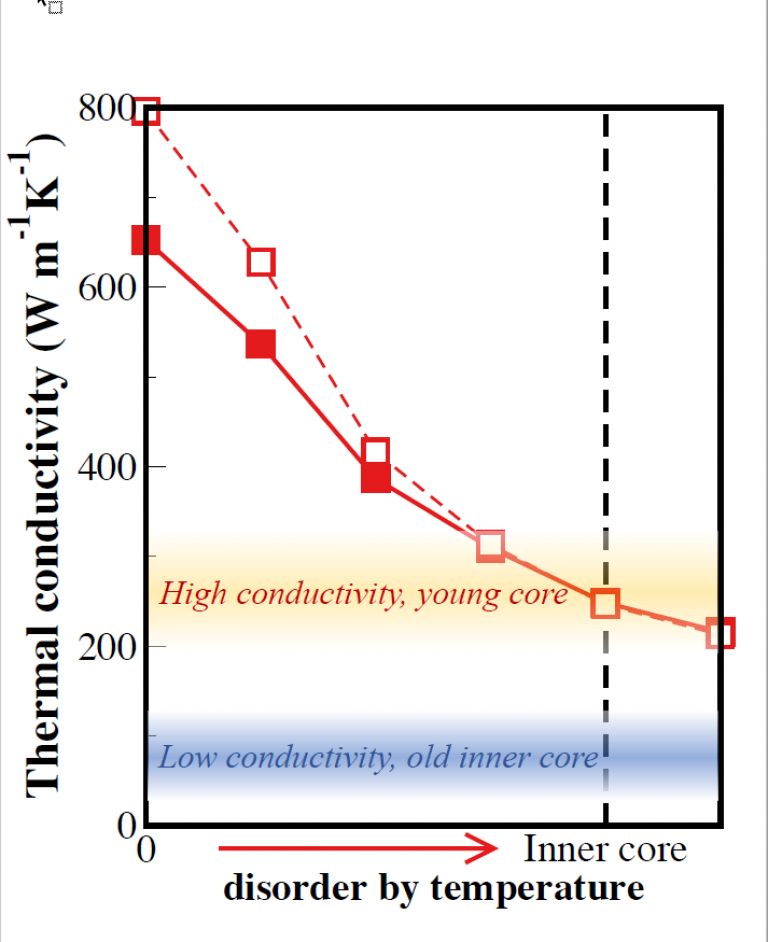Electronic correlations & transport in iron at Earth’s core conditions
4 September 2020
Dr Monica Pozzo and Prof Dario Alfè co-authored a paper published in Nature Communications: Electronic correlations and transport in iron at Earth’s core conditions.

The Earth’s core is made of metallic iron, with the inclusion of a small amount of impurities such as oxygen, sulphur, silicon and perhaps others. It is hotter at the center, and heat is carried outwards by conduction, and in the outer liquid core also by convection. Since it is a metal, most of the conducted heath is carried by the electrons, which are slowed down (scattered) by their interactions with the vibrating iron ions (i.e. the iron nuclei plus those electrons that remain tightly bound to them, and do not participate to conduction). The electrons also bump into each other, and are thereby additionally slowed down by this electron-electron scattering process. The speed at which the heat is transferred outwards is determined by the strength of these electron-ion and electron-electron scattering processes, and is a fundamental parameter to understand how our planet uses this heat to function. Although the electron-ion scattering has been studied in relatively high detail by many research groups, and its strength mostly agreed on, the electron-electron scattering contribution has remained elusive.
In this work we have used advanced condensed matter techniques, coupled with high performance computing, to evaluate this electron-electron contribution, and found that it only contributes about 20% of the total, so most of the thermal conductivity is determined by the electron-ion scattering process. This result is important, because it validates previous conductivity estimates that only included the electron-ion scattering process. In particular, it confirms that the conductivity of iron the Earth’s core is high. This has several implications, including the suggestion that the solid inner core is much younger than previously thought.
Related Links:
- Pourovskii, L.V., Mravlje, J., Pozzo, M. and Alfè, D. Electronic correlations and transport in iron at Earth’s core conditions. Nat Commun 11, 4105 (2020).
- Dr Monica Pozzo research profile
- Prof Dario Alfè research profile
 Close
Close

